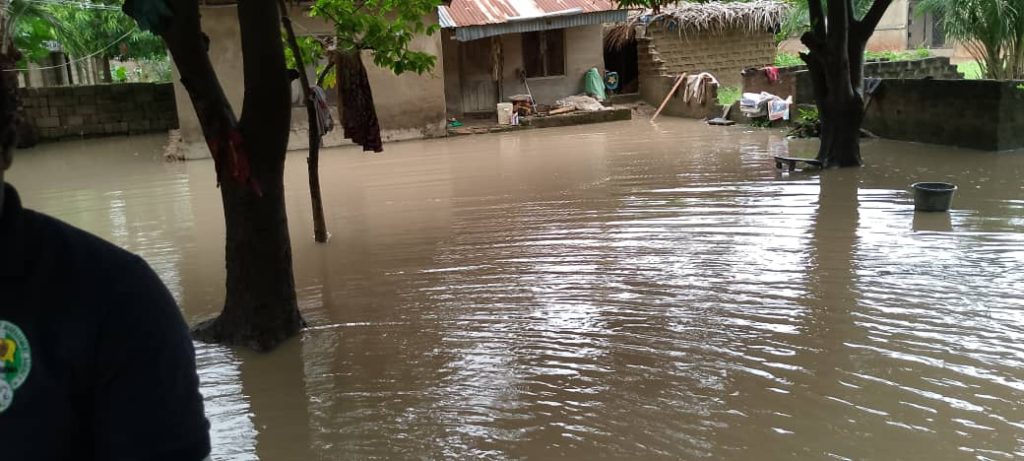The Nigeria Hydrological Services Agency (NIHSA) has raised the alarm over potential flooding in several parts of the country, warning of high to very high flood risks in 31 states, including Lagos, Rivers, and the Federal Capital Territory.
In a statement on Thursday, NIHSA’s Director General, Umar Ibrahim, linked the alert to persistent rainfall and rising river levels, cautioning that the danger period would span from August 7 to August 21.
States on the agency’s watchlist include Adamawa, Akwa Ibom, Anambra, Bauchi, Bayelsa, Benue, Borno, Cross River, Delta, Ebonyi, Edo, FCT, Gombe, Imo, Jigawa, Kaduna, Kebbi, Kogi, Kwara, Lagos, and Nasarawa. Others are Niger, Ogun, Ondo, Plateau, Rivers, Sokoto, Taraba, Yobe, and Zamfara.
A total of 198 local government areas and 832 communities fall within the projected flood impact zone, according to NIHSA’s colour-coded flood risk map. “Possible disruption of major transportation routes is anticipated,” the agency warned.
Emergency response stakeholders have been urged to activate contingency plans, while residents in high-risk areas are advised to prepare for possible evacuation. NIHSA also encouraged the public to follow its weekly state-level and community-specific forecasts via its official dashboard and social media channels.
The advisory comes as part of NIHSA’s continued effort to limit the annual impact of seasonal flooding, which damages infrastructure and displaces thousands each year.
Lagos urges relocation from lowlands due to flooding
In Lagos, the state government has appealed to residents in flood-prone communities to move to higher ground.
“Those around the Ajilete axis of Lagos, that’s Ajegunle, they have to move. Those around the coastline of Ikorodu; Majidu, have to move. Some areas around the Lekki corridor, too, not all,” said Commissioner for the Environment, Tokunbo Wahab, on Channels Television’s Politics Today on Tuesday.
He assured that areas like Epe, Mushin, and Ikeja were expected to remain safe but warned residents of Isheri in the OPIC axis to stay on high alert.
Wahab noted that Lagos, being a coastal city, is particularly vulnerable to climate change impacts and would likely see heavier rainfall this year than last, based on predictions from the Nigerian Meteorological Agency (NiMet).
“For those who stay in the lowland of Lagos, they have to move to the upland pending when the rain recedes,” he said.
On Monday, parts of Lagos were submerged after hours of uninterrupted rain from Sunday night into Monday evening. Viral videos showed flooded streets, submerged vehicles, and residents wading through waterlogged areas, disrupting economic activities in the state.
Despite the situation, Wahab urged calm, stating that the government was already working to clear drainage channels and widen flood pathways to reduce the impact.



